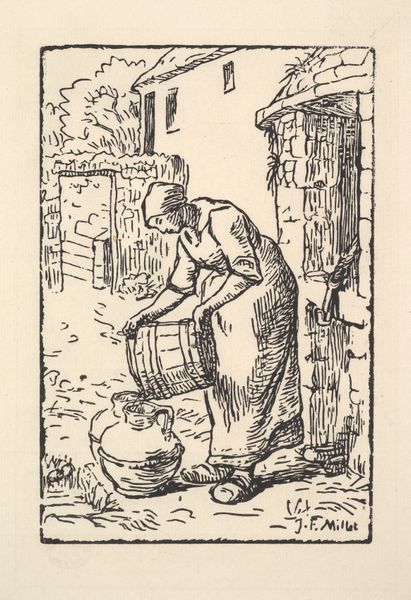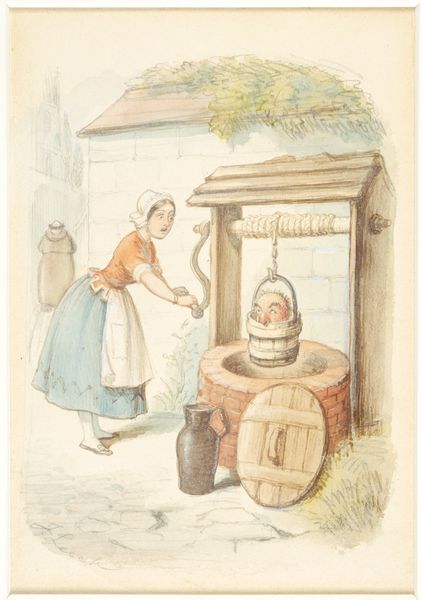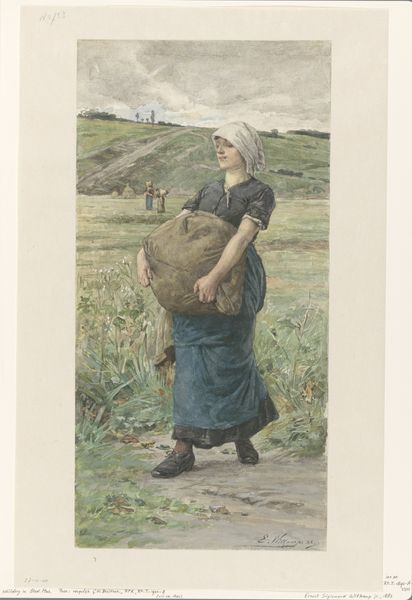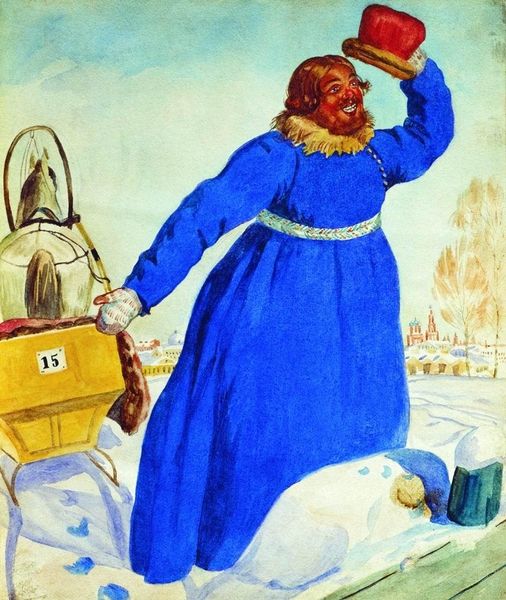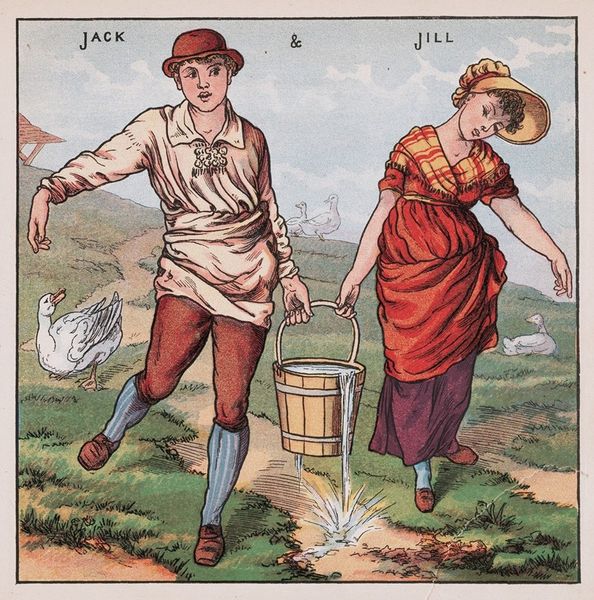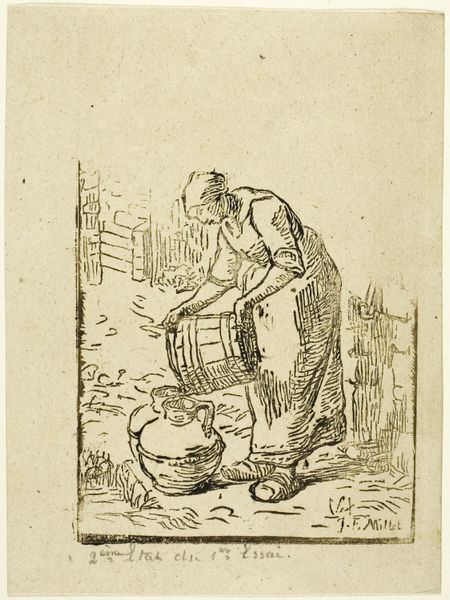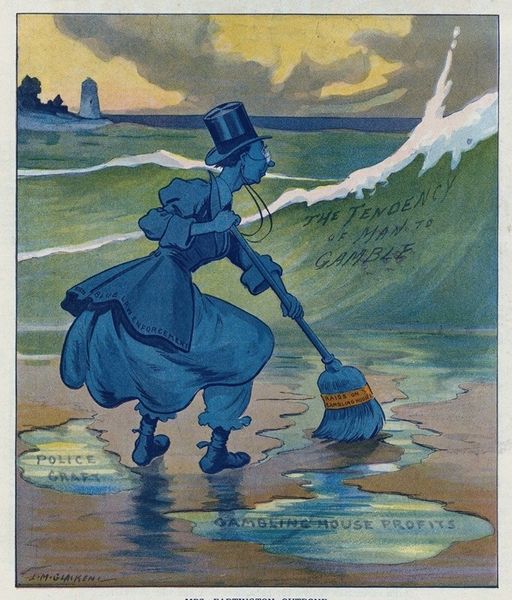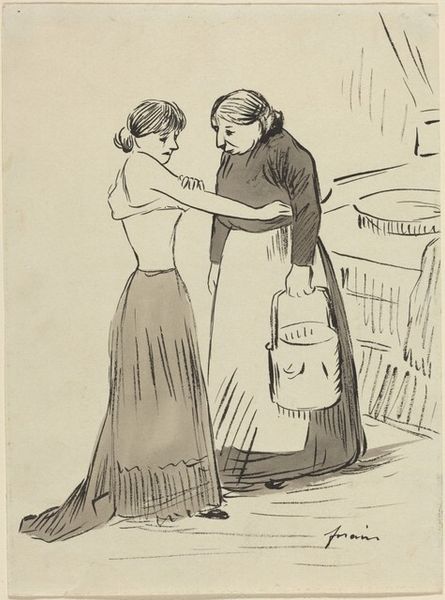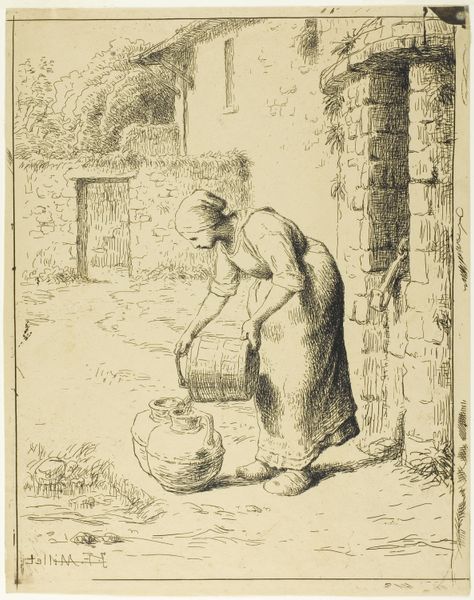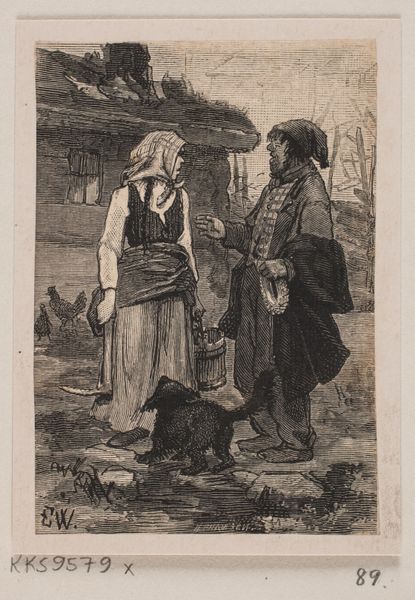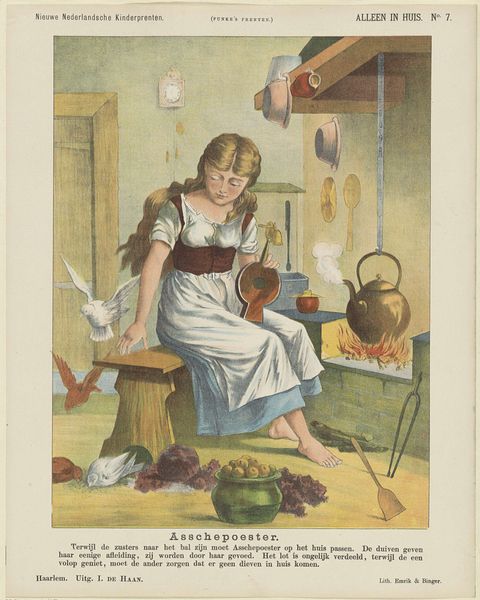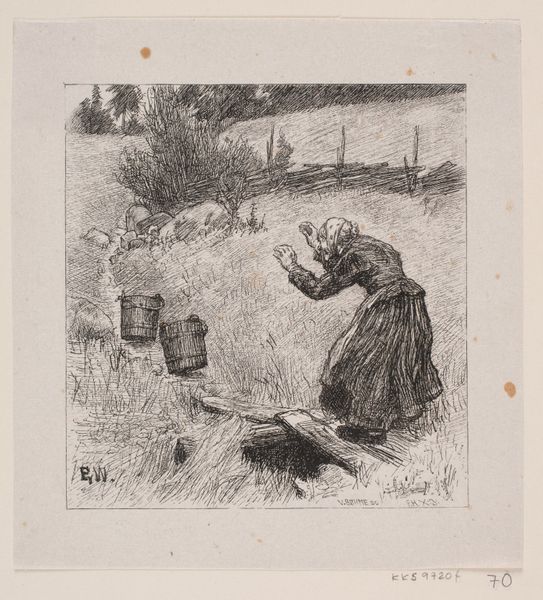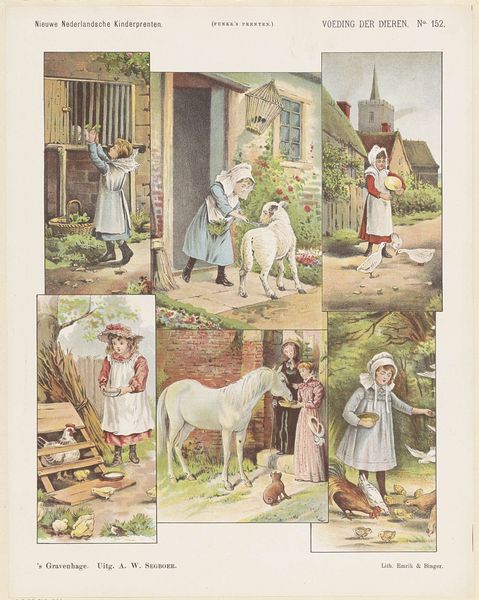
Copyright: Public Domain: Artvee
Théophile Alexandre Steinlen sketched this image of a farm girl, likely with crayon, during a period of immense social change in France. Looking at the image we see more than just a pastoral scene. Instead, Steinlen draws us into the economic realities of rural life. Note the girl's worn clogs and simple clothes, visual indicators of her working-class status. Her posture and direct gaze project dignity, yet also hint at the daily grind of farm labor. The setting suggests a specific time and place. The stone buildings, washing line, and loose chickens evoke the French countryside. But who was this girl, really? Was she a symbol of rustic virtue, or a reminder of the harsh conditions endured by so many? Historical context helps us understand more. By researching the economic conditions and social hierarchies of rural France in the late 19th century, as well as by researching Steinlen’s history of socially conscious artmaking, we might find a more nuanced interpretation. The meaning of this art is always contingent on social and institutional context.
Comments
No comments
Be the first to comment and join the conversation on the ultimate creative platform.
